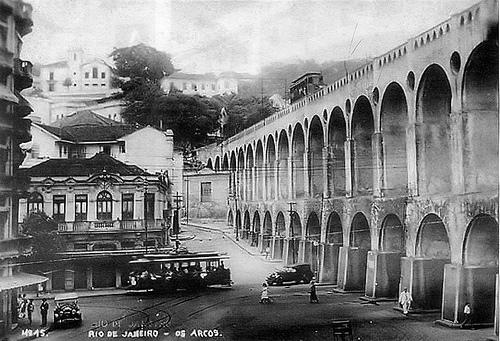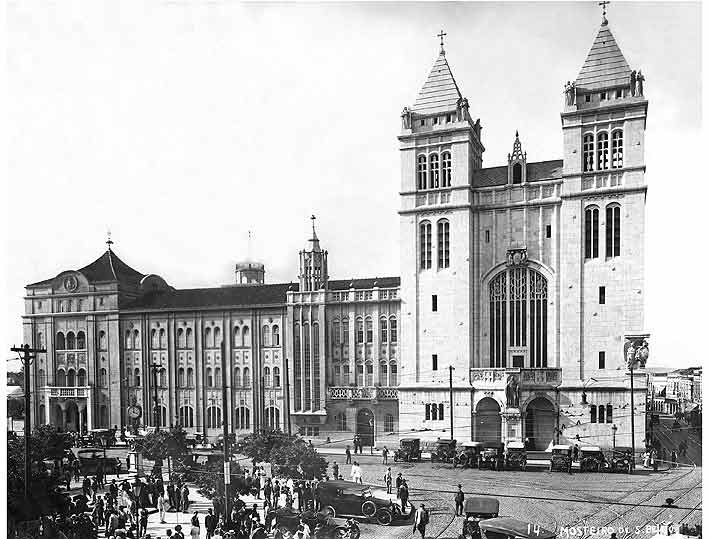By the 1930s, Praça Tiradentes, Lapa, and Cinelândia had become important places in Rio where effeminate men gathered for homosocial relations, including finding sexual partners with homens (“real men”). Significant population growth, a renewal of downtown Rio from the turn of the century on, and increased urban anonymity provided increased public space for homosexual activities.
The southernmost neighborhood of the city’s homosexual topography was Cinelândia, at the time the epicenter of Brazilian high culture. While the Municipal Theatre is perhaps the neighborhood’s most recognizable landmark, the nearby movie houses became popular venues for discreet homosexual encounters.

View of Cinelândia square in 1919. The monument to Floriano Peixoto is in the foreground. The Municipal Theatre is to the left.
The working-class neighborhood of Lapa lay between Cinelândia and Praça Tiradentes, and its several boardinghouses offered more privacy for intimate homosexual interactions. Moreover, its bohemian reputation created a more inviting environment for men seeking sex with other men. Despite this perceived nonchalance, Lapa’s homosexual residents and visitors routinely encountered discrimination in the neighborhood.
João Francisco dos Santos, one of Lapa’s most well-known residents, became famous in the 1930s for his brazen, belligerent personality and his unapologetic demeanor. Born in poverty to a family of ex-slaves, João lived a life similar to those of many young, homosexual migrants who moved to Rio from the Northeast and the countryside. Better known as the drag performer Madame Satã (Madame Satan), João’s folk-figure status stems from his uncommon willingness to defend himself from discrimination by any means necessary.
In 2002, Brazilian director Karim Aïnouz told dos Santos’s story in the film Madame Satã, which premiered at that year’s Cannes Film Festival. Below is the film’s trailer (in Portuguese). The following link contain’s the New York Times’ review of Madame Satã.
In São Paulo, men who desired sex with other men also enjoyed expanded options for “cruising.” Below are several images of popular sites for Paulistano men to meet other men for sex in the 1930s.
In Recife, Pernambuco, João Ferreira da Paz became enamored with the Hollywood actress Kay Francis. The introduction of cinema to Brazilian cultural life provided an outlet for homosexual men to escape daily life and find inspiration in the lives of others. In the late 1930s, Ferreira da Paz built a persona around Kay Francis and performed as the drag-version of her at every possible occasion. According to Ferreira da Paz, Francis was so inspirational because she managed to remain elegant and glamorous despite her suffering.
INSERT PICTURE OF JOÃO AS KAY








